|
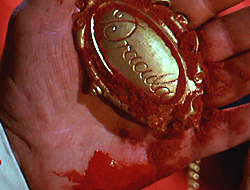

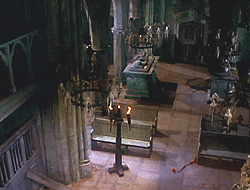
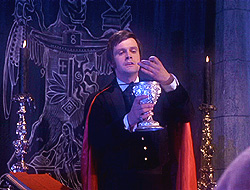


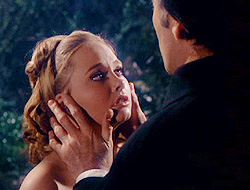


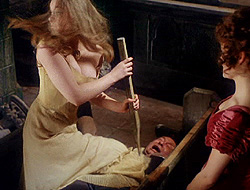

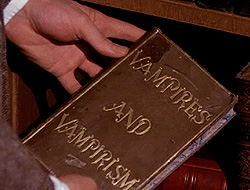
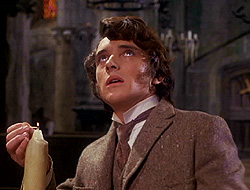

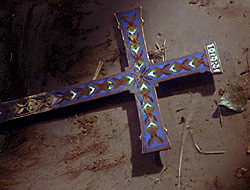

|
A trader in trinkets and curiosities finds
something of real value when he stumbles into the final scene of the
preceding Hammer Dracula epic, Dracula Has Risen From the Grave.
Later, three Victorian gentlemen hypocrites are looking to expand their
experience life's forbidden pleasures. On consulting with an amateur
Satanist, the wayward son of an aristocratic family, they are led to
purchase the relics of Dracula from the trader. Little do our gentleman
suspect that they are setting lose a malignant force that will destroy
their lives and families.
Themes
By focusing on people who seek out Dracula, rather than accidentally
falling victim to him, screenwriter John Elder was able to come up with a fresh angle
on the Dracula myth. After seeing the tawdry scene of the gentlemen at
their favorite brothel, it is easy to understand why they feel
dissatisfield. Like many in the 1960's, when this film was made, they
assume that more intense and forbidden experiences will bring them more
satisfaction and a fuller experience of life. Actually, the story as
written does not completely rule out this possibility. For these gentlemen
panic before the ressurection of Dracula is complete, and their betrayal
sets him on a path of vengeance that will be their inevitable undoing. An
unanswered question is what the result would have been if they had all
drunk the blood of Dracula and become his willing servants.
Heroines Run Amuck
The other side of this guilty-victims theme is portrayed by the young
people in this story, and the upshot is surpisingly cynical. The heroine,
Alice Hargood, is in love with a nice young man, but her love is thwarted
by her cruel father. His enmity is due to the fact that her beloved is the
son of one of his companions in vice. Apparently he doesn't want anyone
associated, even indirectly, with his own depraved lifestyle to marry his
daughter. Without understanding his twisted motives, Alice receives only
seemingly pointless cruelty from him. Small wonder that Dracula finds her
easy prey. Even without putting the bite on her, he easily hypnotizes her
and causes her to do his evil bidding. (By contrast, her friend Lucy, who
is happily engaged, shows marked resistance to Dracula's thrall and
succumbs to him only on his second try, while is face reflects the most
intense effort of will.)
In this role, Linda Hayden is fortunate to
play the only heroine of a Hammer Dracula movie who is not
completely one-dimensional. Fortunately, the actress proves more than
equal to the part. It is great fun to see the innocent relish she brings
to carrying out Dracula's will, such as slaying her father with a shovel,
waylaying her best friend to a cemetary crypt so she can be vampirized,
and driving a stake through the heart of her friend's father while blood
spurts in time with his failing heartbeat. To top it all, she betrays
Dracula himself when he says that he has no further use for her.
"Hell hath no fury, etc." is a lesson that the Count seemingly
has not learned after numerous lifetimes.
Cinematic Virtues
Like the other period Dracula productions from Hammer, this one
includes some delightful set design, particularly in the Courtney family
crypt where much of the action occurs. The outdoor cemetary scenes are
also fine and might possibly have been filmed in a real old cemetary.
The cast of English character
actors is generally superb, especially Geoffrey Keen as the sadistic
William Hargood, who seems the most strong-willed character in sight, but
collapses the most abjectly when things go wrong. Michael Ripper makes his
usual amusing appearance, this time as a lazy, dipsomaniacal police
detective named Cobb. (One of the twists that seems never to have occurred
to Hammer's scripters is that the workings of a competent police force
might lend extra suspense to the plot.)
Christopher Lee, as usual, has very little dialog
as Dracula, so falls back on the techniques of a silent screen actor to
convey the character's masterful coldness, ferocity, and finally his
abject terror.
Vampire Lore
Dracula and his converts adhere to the common convention of sleeping by
day in coffins. Apparently, however, Dracula does not need to lie in his
"native soil" as he readily adapts to a used sarcophagus.
He shows no control over animals, or animal transformations, and the issue
of whether he would reflect in mirrors is not addressed.
An interesting touch, however, arises from the
fact that he kills the sub-heroine, Lucy, twice. The first time, she is
converted into a vampire with fangs and all. Afterward, she still yearns
to be bitten by him, and seems to show an quasi-orgasmic pleasure while
her engorges himself on her blood... Until suddenly he becomes more
violently forceful, and she screems. The next time we see her, her body is
floating in a pond, or perhaps it is a backwater where the body drifted
from a stream. In Bram Stoker's invented vampire mythos, vampires cannot
cross running water, which in the Hammer movies extends to the assumption
that immersion in running water would be fatal. (This is illustrated both
by the ending of Dracula, Prince of Darkness and a
ceiling-sprinkler scene in Satanic Rites of Dracula.) Anyway,
Dracula could have saved himself the trouble of dragging her down to the
river if he'd kept a wooden stake handy, –but he could be excused for
having an aversion to stakes by this point.
The young hero Paul finds a leather-bound volume
called Vampires and Vampirism that looks like it would be very
useful indeed.
Dracula Redivivus
The rationale for reviving Dracula, which would be reused later in Scars
of Dracula, is that his dried, powdered blood can be reanimated by the
addition of fresh blood. Perhaps it's worth remarking here that the blood
in Hammer films tends to be an unrealistically bright red, which in a way
makes it more theatrical and less frightening than the real thing.
Dracula's blood, additionally, is rather thick like tomato paste, so it
looks really gross when sliding down a rock. Why it turns into a powder
instead of just a rust-brown stain is anybody's guess. Dracula Remortis - Spoiler
In one of the less convincing Hammer finales, Dracula starts to
hallucinate that the resanctified crypt is the location of an ongoing holy
service. In his confusion, he falls from a height, writhes about a little
while, and fades away to dust again. A simple fall would seem unlikely to
kill so fearsome a being, so the implication would seem to be that he died
largely of shock from excessive exposure to a holy environment.
Loose Ends
Jeremy, the blonder of the two young
heroes, after being bitten by his vampire fiancee, and murdering his
father with a large curved knife, is not thereafter heard from again. His
fate must remain a matter of speculation.
Taste
the Blood of Dracula DVD: Click
here for ordering information |
















